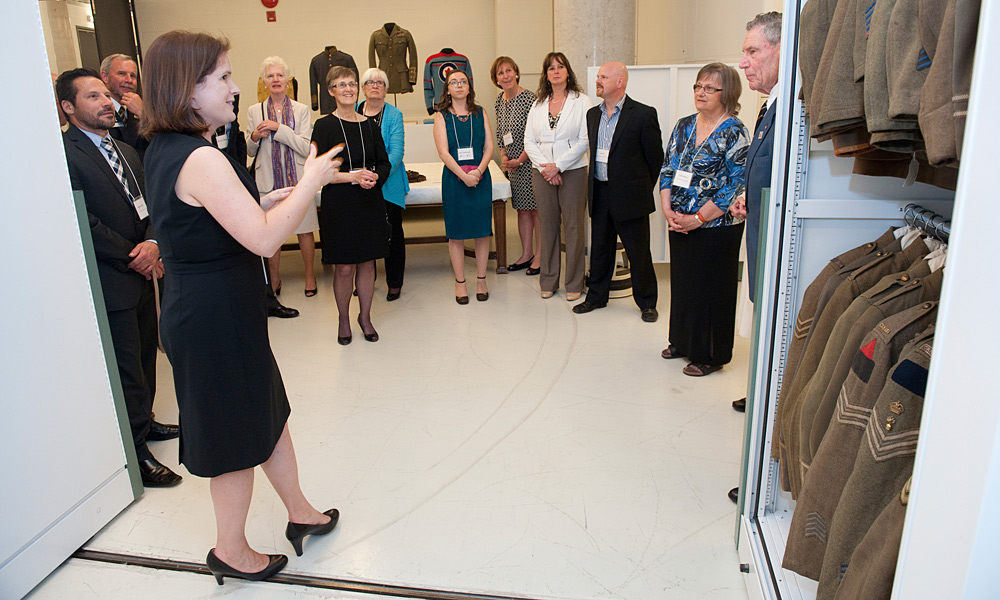The Canadian War Museum: Vision + Reality = Impact
November 25, 2015
Donors were given a behind-the-scenes tour as part of the 10th anniversary celebrations.
CWM2015-0060-0202-Dm
When the Canadian War Museum opened its doors 10 years ago, it had a vision: to set new standards for military history museums by providing a more honest, engaging and affecting experience. Judging from the range and depth of its programs, exhibitions and visitor experience, those standards have been met and exceeded.
During a special celebration on May 6, 2015 to mark the Museum’s first decade, Mark O’Neill, President and CEO of both the War Museum and the Canadian Museum of History, emphasized the special ties the War Museum has had, and continues to have, with its donors and volunteers. “The Museum is the institution it is today because of your unwavering support,” he noted.
“It took vision to make the new War Museum on LeBreton Flats a reality,” Mr. O’Neill continued. “Stories of courage, fear, sacrifice, respect, hope, sorrow: few are unmoved by the people and events they encounter when interacting with the Museum.”
Visitor comments about their experience at the War Museum bear this out. Responding to exhibitions taking them to the Plains of Abraham in 1759, Queenston Heights in 1812, Passchendaele in 1917, Dieppe in 1942 and Kandahar in the first decade of this century, visitors are deeply affected. “The Museum moved me, taught me, touched my heart and inspired me,” one visitor wrote.
The War Museum is committed to approaching debated subjects with sensitivity and thoughtfulness. Over the past 10 years, it has embraced subjects not often found in military museums — reflections about the wartime internment of Canadians of Japanese and Ukrainian descent, as well as an exhibition entitled Peace.
The Museum takes special pride in reaching children and their parents. Schoolchildren across the country have learned about the legacy of Canada’s wartime stories through mainstay in-gallery programs, as well as new donor-supported classroom programs such as Supply Line, which allows schools to borrow First World War artifacts and objects.